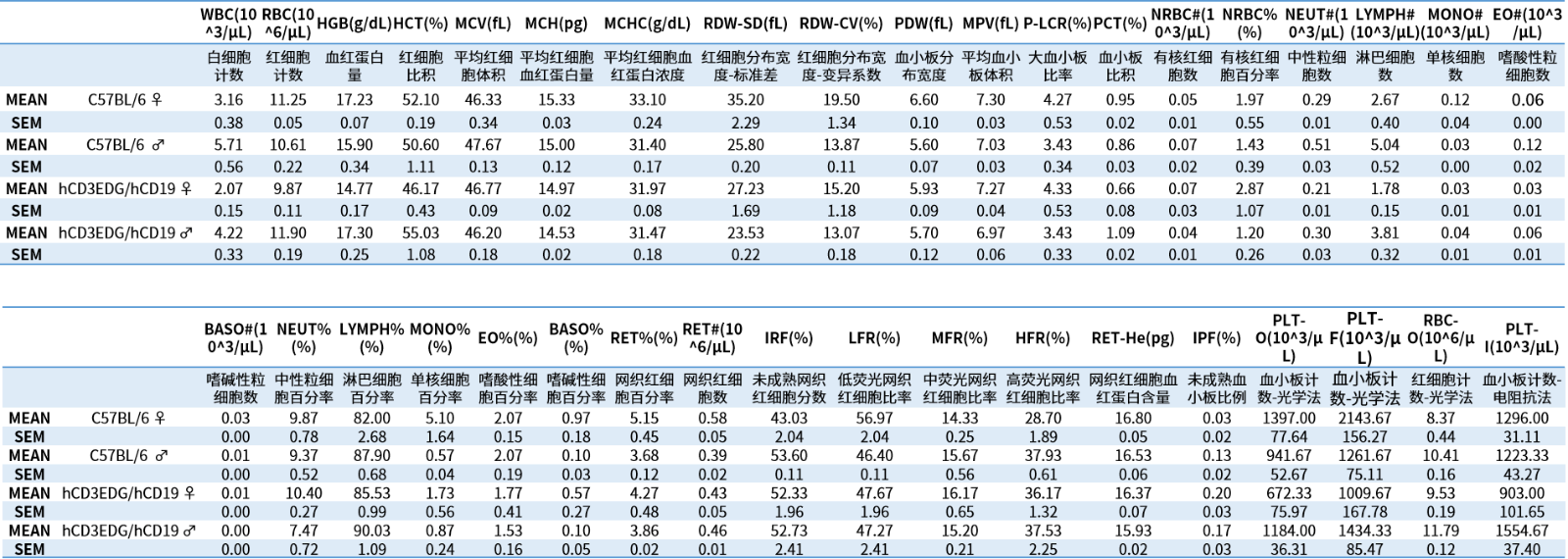hCD3EDG/hDLL3
Nomenclature
C57BL/6Smoc-Cd3etm1(hCD3E)Cd3dtm1(hCD3D)Cd3gtm1(hCD3G)Dll3em1(hDLL3) /Smoc
Cat. NO.
NM-XA-240036
Strain State
Repository Live
Gene Summary
Gene Symbol
Dll3
Model Description
Validation Data

Fig.1 Detection of humanized DLL3 expression in male hCD3EDG/hDLL3 mice by RT-PCR.
Homozygous: one band at 282 bp with primers F2/R2(hDLL3).
Abbr. M, DNA marker; HO, homozygous; WT, wild type.

Fig.2 Detection of humanized DLL3 expression in female hCD3EDG/hDLL3 mice by RT-PCR.
Homozygous: one band at 282 bp with primers F2/R2(hDLL3).
Abbr. M, DNA marker; HO, homozygous; WT, wild type.

Fig.3 Detection of mouse Dll3 expression in male hCD3EDG/hDLL3 mice by RT-PCR.
Wild type: one band at 172 bp with primers F1/R1(mDll3).
Abbr. M, DNA marker; HO, homozygous; WT, wild type.

Fig.4 Detection of mouse Dll3 expression in female hCD3EDG/hDLL3 mice by RT-PCR.
Wild type: one band at 172 bp with primers F1/R1(mDll3).
Abbr. M, DNA marker; HO, homozygous; WT, wild type.

Fig.5 Detection of mouse Gapdh expression in male hCD3EDG/hDLL3 mice by RT-PCR.
Wild type and homozygous: one band at 123 bp with primers F/R(mGapdh).
Abbr. M, DNA marker; HO, homozygous; WT, wild type.

Fig.6 Detection of mouse Gapdh expression in female hCD3EDG/hDLL3 mice by RT-PCR.
Wild type and homozygous: one band at 123 bp with primers F/R(mGapdh).
Abbr. M, DNA marker; HO, homozygous; WT, wild type.

Fig.7 Detection of human DLL3 expression in 5 embryos (E10.5~E14.5), whose parents are both HO hCD3EDG/hDLL3 mice, by WB.
Abbr. HO, homozygous.

Fig.8 Detection of human DLL3 expression in 7-14-week-old hCD3EDG/hDLL3 knockin mice by WB.

Fig.9 Detection of (A) body weight, (B) the weights of different tissues and (C) organ index in HO hCD3EDG/hDLL3 mice.

Fig.10 Detection of mIgG(A) and mIgM(B) expression in serum by ELISA.
Abbr. HO, homozygous; WT, wild type.

Fig.11 Detection of immune phenotype in (A) peripheral blood and (B) spleen by FACS.
Abbr. HO, homozygous; WT, wild type.
Table 1. Blood routine examination in hCD3EDG/hDLL3 dKI mice (n=3 /group).

You may also like
On Dec 16, 2018, Broad Institute and Shanghai Model Organisms Center Inc (SMOC) has entered into a non-exclusive license agreement under which Broad has granted SMOC worldwide rights to commercialize a service platform for genetically modified mouse models under Broad's intellectual property.
Learn moreAt GenoBioTX, we understand that the lengthy wait times for gene-modified mouse models can hinder your research progress. Traditional methods often require 6-9 months, leading to delays and increased costs. That’s why we’re thrilled to introduce our innovative service designed to streamline this process and deliver results faster.
Learn more


